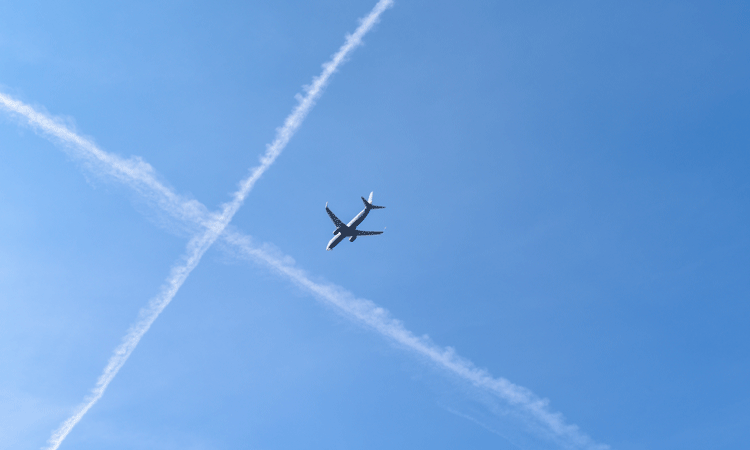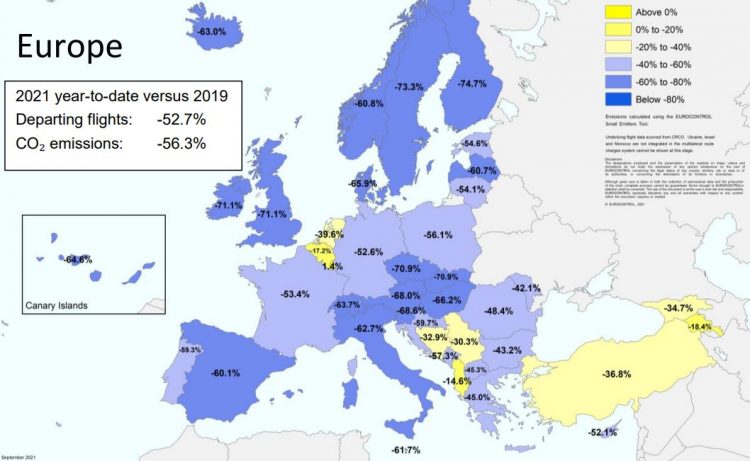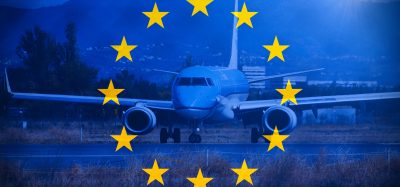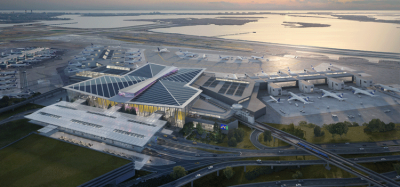EUROCONTROL Data Snapshot shows decrease in CO2 flight emissions
Posted: 29 September 2021 | International Airport Review | No comments yet
EUROCONTROL’s latest data report highlights the decrease in CO2 flight emissions despite the strong traffic recovery during summer 2021 in the EU.


In January 2021, EURCONTROL reviewed CO2 emissions from EU flights in 2020 compared to 2019. Following summer 2021’s strong traffic recovery, coming back to the subject, comparing the first eight months of 2021 with the same period in 2019.


Credit: EUROCONTROL
Restrictions on short-haul and long-haul travel have continued from 2020 into 2021 but, mostly for short-haul, this summer 2021 there has been some significant relaxation. Following global standards, all CO2 emissions from a flight are assigned to the country of departure, so here EURCONTROL report just on departing flights: there were 52.7 per cent fewer departing flights so far in 2021 than in the same period in 2019, in the countries shown on the map.
CO2 emissions were down a little more than flights: 56.3 per cent lower than in January to August 2019. The decline in CO2 is deeper than that of flight departures because medium and long-haul, which emit more CO2, have recovered more slowly than short-haul. E.g., within that overall 52.7 per cent decline in flights, medium-haul flights are down 57 per cent, while very short-haul (which are often domestic) are down only 40 per cent.
The map shows that there remains considerable variation between countries in their CO2 emissions. In the extreme cases, Luxembourg’s critical role in the global cargo network means that its CO2 emissions are around the same as 2019, while Finland, at the other extreme, has low emissions mostly due to having nearly the weakest flight recovery of all (departing flights still down by 69 per cent year-to-date, just ahead of the UK).
The International Airport Summit is open for registration!
Date: 19 – 20 November 2025
Location: JW Marriott Hotel Berlin
At our flagship event of the year, we will dive into the future of airport operations, with expert-led sessions on passenger experience, innovative smart technologies, baggage handling, airside operations, data, security, and sustainability.
This is where global airport leaders come together to share insights, challenges, and real-world solutions.
Limited complimentary passes are available for eligible professionals – first come, first served!
Related topics
Aircraft, Airside operations, Emissions, Sustainability, Sustainable development


















